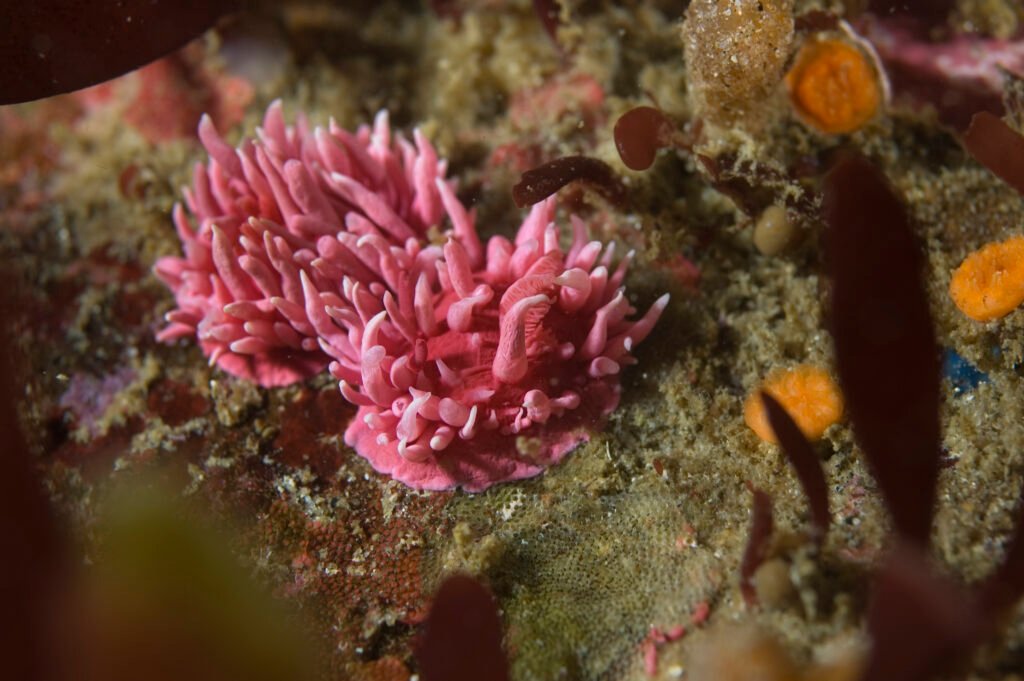Physical Description
The Diamondback Tritonia, scientifically known as Tritonia festiva, exhibits a variable ground color ranging from pure white to cream, light cadmium yellow, or occasionally burnt sienna. Its dorsum features a series of white, reticulate lines and loops, while an opaque white line runs along the edge of the foot and anterior margin of the frontal veil. The frontal veil’s margin bears approximately 7-12 long, tapered, white processes. Rhinophores boast about 8-10 vertical, uni- to bipinnate, plumose, yellowish processes encircling the shaft below the tip. Additionally, dorso-laterally on either side of the dorsum, there is a single, rather irregular, undulating series of about 9-15 yellowish, bi- to tripinnate, plumose branchial appendages. The species typically measures about 20mm in length but may reach up to 70mm.
Habitat and Geographical Range
Diamondback Tritonias inhabit the eastern Pacific coast, favoring rocky substrates in various marine environments.
What They Eat and How They Breed
As with other nudibranchs, Tritonia festiva likely feeds on various sessile invertebrates, such as sponges, bryozoans, or tunicates. They reproduce by laying eggs in gelatinous masses on suitable substrates, with each individual being both male and female, allowing for reciprocal sperm exchange during mating.












